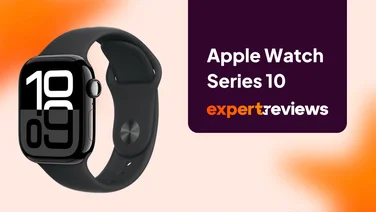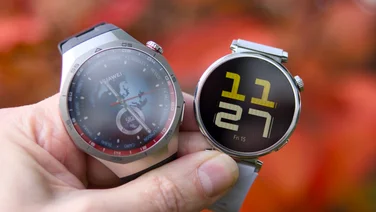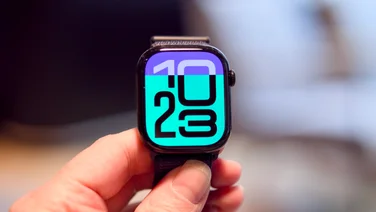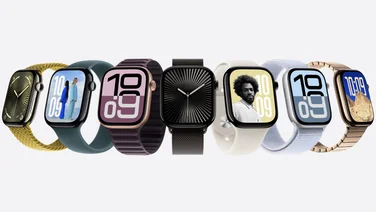To help us provide you with free impartial advice, we may earn a commission if you buy through links on our site. Learn more









The original Garmin Vivofit was the company’s first attempt at creating a fitness tracker and although it wasn’t a bad device it didn’t stand out in any way. The Garmin Vivofit 2 was more of an update than a new product – a Vivofit 1.5 if you will – and addressed some of the core issues with the original device, while maintaining the same design.
The Vivofit 3 changes things around a bit more, and at least looks different to its predecessors, but under the skin it’s pretty much the same as the previous versions. Okay, that’s not entirely fair. There are some functional additions to the Vivofit 3 fitness tracker, but is there enough to elevate it above its ever-more capable competition?
READ NEXT: The best fitness trackers – our pick of the best in 2017
Garmin Vivofit 3 review: A new look
Where the display on the older Vivofits ran along the length of the device, forcing you to twist your head to read it, the Vivofit 3 display can be read in a far more natural way – just like a normal watch in fact.
The downside of the change in display orientation is that the screen itself is now much smaller but that doesn’t make it more difficult to read. Essentially making the Vivofit 3 is now a viable everyday wristwatch as well as a fitness tracker, and that’s a positive step forward.

Understandably with a display this small, the Vivofit 3 isn’t a touchscreen device. Instead, you get one large button below the screen, pressing which cycles you through all the info on the device. You’ll find time of day here, date, current step count, remaining steps to hit your daily goal, distance travelled, calories burned and active minutes.
Pressing and holding the button activates the screen’s backlight so you can read it in dark or dim conditions. Keeping the button pressed launches the stopwatch function and holding it even longer forces the device to sync with your phone. Annoyingly, you need to do this to sync any data with your phone – opening up the app doesn’t spark an auto sync.
Garmin hasn’t changed the design of the Vivofit to improve function, however, it’s all about form. With other manufacturers bringing more stylish devices to the market, Garmin is aiming the Vivofit 3 at a similar fashion-conscious audience.
The problem is that the Vivofit 3 just doesn’t look particularly stylish, especially when compared with a device such as the Fitbit Alta. The standard black rubber band looks utilitarian to say the least, and there’s nothing attractive about the screen design. It is, at least practical, however, the locking clasp keeping it securely attached to your wrist while you’re wearing it.

That’s the stock wristband. To enhance the Vivofit 3’s style credentials Garmin has been busy producing a whole range of fashion bands for the device, with some of them created by Jonathan Adler – he’s a home décor designer, in case you were wondering.
Unfortunately, none of the optional bands make the Vivofit look any more attractive, at least not to my eye. Whereas adding a leather strap to a Fitbit Alta makes an already good looking fitness tracker look even better, the optional bands for the Vivofit 3 look like something my ten-year-old daughter might wear.

Garmin Vivofit 3 review: Feature set
As with the previous Vivofit devices, the Garmin Vivofit 3 doesn’t have a rechargeable battery. Instead it’s powered by a lithium cell that’s good for a year of usage before it’ll need changing. That means you’ll never have to remember to charge the device and consequently you’ll never lose track of your activity because you forgot.
The year-long battery life also makes the Vivofit 3 a true 24/7 fitness tracker, since you’ll never really need to take it off, and it’s properly waterproof so you don’t need to take it off in the shower or even when you go for a swim.
So what does it track? Garmin Vivofit 3 will log every step you take and estimate distance travelled and calories burned from that step data. Your step goal is dynamic, so it will change based on your activity. This is a feature Garmin brought in with the original Vivofit and it’s one that other manufacturers should take note of.
The Vivofit 3 still uses Garmin’s activity bar to shame you into moving – the longer you’re inactive, the longer the red bar on the screen becomes until it spans the entire width of the screen, showing that you’ve been inactive for over an hour.

While the activity bar is a nice touch, though, you have to be physically looking at the device to notice it. That’s because the Garmin Vivofit 3 has no vibration motor. The lack of vibration also makes the Vivofit 3’s alarm function completely useless; instead of vibrating to wake you up the Vivofit 3 will beep, but the beep is so soft it would struggle to wake even the lightest of sleepers.
This is where we get to the new features, and first up is the ability to log active minutes, essentially ascertaining when you’re putting a bit of effort in, whether that be a brisk walk or a jog around the park.
Adding to the active minutes feature is Vivofit 3’s auto activity detection feature, which doesn’t just log when you’re active, but also attempts to work out what you’re actually doing. So, when you go for a run, you shouldn’t have to tell the Vivofit 3 that you’re running, it will automatically figure that out and add your run to your timeline for that day.
In principle, the auto activity detection feature is a good one, and something the competition is already doing well. Unfortunately, the Vivofit 3 isn’t particularly good at it. While I was sitting in a meeting for an hour the Vivofit 3 decided I was swimming and logged that swim for me on my timeline. In fact, you’d be forgiven for thinking I was a fish if you looked at my daily timelines so often does the Vivofit 3 think I’m swimming – for the record I haven’t been swimming once with the device.
Garmin Vivofit 3 review: App and web portal
The Garmin Connect platform has improved a lot in the past year. Since Garmin’s expertise used to lie primarily in more hardcore sports tech like GPS running watches and cycle computers, Garmin Connect was geared towards those devices and related activities.

Now, the firm has made a big effort to make Garmin Connect more approachable and usable for people who are just using a fitness tracker for logging daily step activity. While it’s still not as good for this type of activity as Fitbit, it’s a far better experience than it used to be.
Firing up the Garmin Connect app will display the snapshot screen for your day, with your step count and sleep data prominently displayed at the top. The bottom half of the screen will display additional info such as calories burned, active minutes, flights of stairs climbed, etc. Unfortunately, since the Garmin Vivofit 3 doesn’t have an altimeter built into it, that stair count will just remain blank.
Swiping the screen right and left will display more detailed data on specific stats like steps over time, sleep for the past seven days, recent activities like running or swimming, etc. There’s useful data in there, but it seems a bit counter intuitive when most fitness tracker apps let you swipe back to get to previous days’ data.
Of course, you can look back at previous days by simply tapping the calendar icon at the bottom of the screen and my confusion is more a result of using an ever changing array of fitness trackers and apps. If you’re using a Garmin tracker every day, locating your previous data in the calendar tab will become natural very quickly.

You can log your food intake within Garmin Connect, too, but the smarter option is to link it with MyFitnessPal, thus pulling in your food diary data from there and also sharing your activity stats the other way, the upshot being that you’ve got a dynamic calorie target to work with each day.
The Garmin Connect web portal gives you access to all your data, but it’s really designed for the heavy Garmin user. If you’re using a Forerunner running watch and an Edge cycle computer as well as a fitness tracker, each of them will live in their own dynamic tile within your browser.
You’ll also find tiles for your daily step counts, your recent bike rides, recent runs, segments cycled or run, etc. You can move the tiles around and arrange them to suit you, but unless you’re using other Garmin equipment it can look a little sparse compared to, say, Fitbit’s web portal.
Garmin Vivofit 3 review: Verdict
The Garmin Vivofit 3 is a fitness tracker that wants to be a style accessory, but it doesn’t really achieve those aspirations and at £90 it’s up against some stiff competition. While there are some new features, there’s not enough here to justify an upgrade for existing Vivofit users, especially since the accuracy of the auto activity detection is questionable.
Ultimately, the Vivofit continues to be something of a disappointment, which is odd considering Garmin also makes the best fitness tracker available, the Vivosmart HR. Obviously the Vivosmart HR is more expensive (around £120 at present) and more complex but it’s still a good buy for practically anyone.
But if you are a casual user looking for a basic fitness tracker that won’t break the bank, should you go for the Vivofit 3? Well, only if you hate having to charge your tracker every 4-5 days. If that describes you then the Vivofit’s one-year battery life will be a godsend. Everyone else would be better off grabbing a Fitbit Alta instead.







